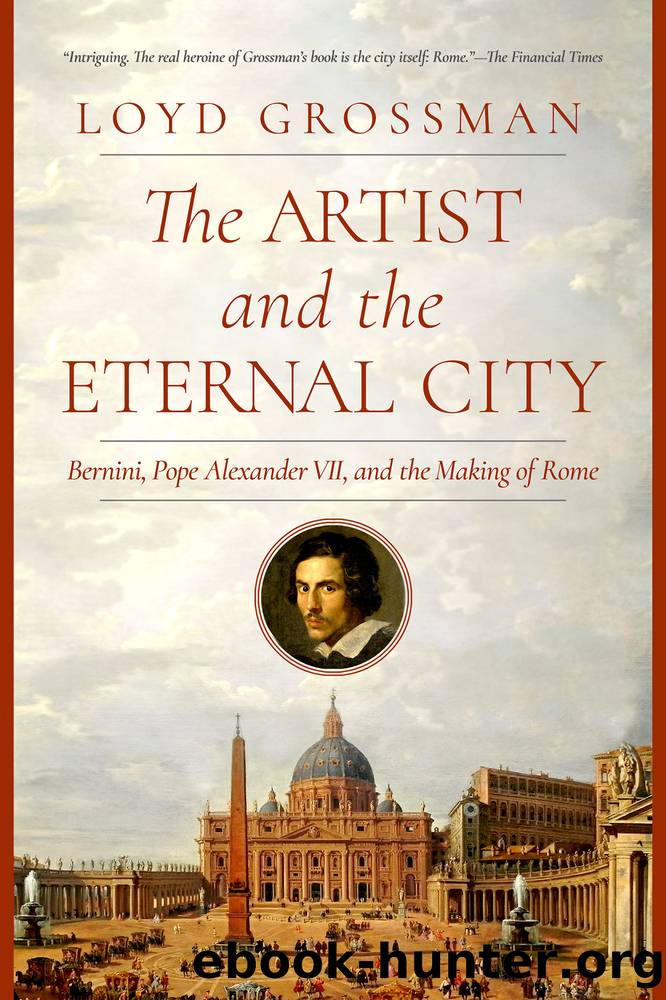The Artist and the Eternal City by Loyd Grossman

Author:Loyd Grossman
Language: eng
Format: epub
Publisher: Pegasus Books
Published: 2021-08-03T00:00:00+00:00
The arch on the left of this second-century tomb carving may show part of the complex of the temple of Isis. Detail of the Tomb of the Haterii, a family of building contractors who also appear to have been involved with the building of the Colosseum (centre)
Just under two hundred years later, this was the site given to the Dominicans to build themselves a church. Out of the nine-hundred-plus churches in Rome, it is the only one built in the Gothic style. The thirteenth century, when Gothic prevailed, was not a propitious time for church-building in Rome, which was then plagued by political and economic instability, a weak papacy and vicious infighting amongst the local aristocracy. In spite of these adverse conditions, the members of the new Dominican Order were determined to have an important presence in the capital of the Christian world. Their mother church, Santa Sabina, was up on the relatively remote Aventine Hill and, with their emphasis on preaching in the vernacular and their desire to reach the growing number of city dwellers, the Dominicans wanted a base in the most densely populated part of town, the Campo Marzio.
Building work on this grand church began in 1280. It was allegedly supervised by the Dominican lay brothers Sisto and Ristoro, the architects of Santa Maria Novella in Florence, which would be a neat story if it could be believed. What is true, however, is that from the beginning the church had strong links with Florence and Tuscany. It was here, for instance, that St Catherine of Siena was buried, as was the artist monk Fra Angelico, one of the fathers of Renaissance art, described on his tomb as âthe flower of Tuscanyâ. As the most international city in Europe, Rome had many churches serving particular nationalities, including non-Roman Italians. Santa Maria sopra Minerva remained informally the national church in Rome for the Florentines right up until the late sixteenth century and the building of San Giovanni dei Fiorentini by the Medici pope Leo X. Many Florentine artists contributed to the church. One of Michelangeloâs weaker works, the Risen Christ, stands by the high altar, a nude figure wearing a risible bronze loincloth added by prudish clerics. A generation earlier, Filippino Lippi, former apprentice to Botticelli, decorated the churchâs Carafa Chapel with frescoes, including one depicting the Dominican theologian St Thomas Aquinas triumphing over heresy. (This seems particularly appropriate, as the neighbouring monastery was the headquarters of the Roman Inquisition and the site of the 1633 show trial of another Tuscan, Galileo, when he was punished for the heresy of believing that the earth revolved around the sun.)
Santa Maria sopra Minerva, and its famous Risen Christ by Michelangelo, from the 16th-century guidebook, Le Cose Meravigliose dellâalma città di Roma
Download
This site does not store any files on its server. We only index and link to content provided by other sites. Please contact the content providers to delete copyright contents if any and email us, we'll remove relevant links or contents immediately.
The Japanese by Christopher Harding(1085)
Watercolor With Me in the Forest by Dana Fox(753)
A Theory of Narrative Drawing by Simon Grennan(742)
The Story of the Scrolls by The Story of the Scrolls; the M(725)
Glittering Images: A Journey Through Art From Egypt to Star Wars by Camille Paglia(717)
Boris Johnson by Tom Bower(620)
This Is Modern Art by Kevin Coval(597)
The Art and Science of Drawing by Brent Eviston(588)
Frida Kahlo by Frida Kahlo & Hayden Herrera(584)
AP Art History by John B. Nici(574)
Banksy by Will Ellsworth-Jones(569)
War Paint by Woodhead Lindy(550)
Van Gogh by Gregory White Smith(547)
Draw More Furries by Jared Hodges(544)
About Looking by John Berger(543)
Scenes From a Revolution by Mark Harris(542)
Ecstasy by Eisner.;(535)
100 Greatest Country Artists by Hal Leonard Corp(523)
Young Rembrandt: A Biography by Onno Blom(512)
